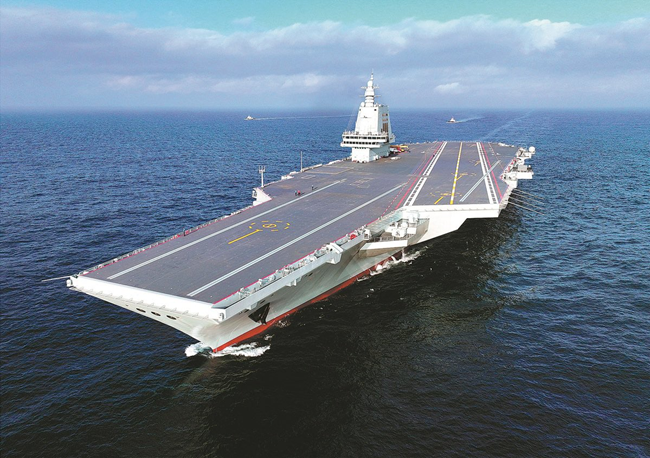
On 5 November, the People’s Liberation Army Navy (PLAN) officially commissioned its third aircraft carrier, FUJIAN, which has now entered active service. The ceremony, held at the Sanya Naval Base on the namesake island in the South China Sea, was attended by senior state officials, including President Xi Jinping.
Xi boarded the FUJIAN - named after the Chinese province facing Taiwan - for an inspection of the ship. Initially known as Type 003, the FUJIAN is China’s third operational carrier, following LIAONING and SHANDONG, commissioned in September 2012 and December 2019 respectively. Powered by conventional steam turbines and diesel generators, the FUJIAN is also China’s first “supercarrier”, an informal term for vessels displacing more than 80,000 tons.
The most significant innovation lies in the fact that the FUJIAN is the first Chinese aircraft carrier equipped with EMALS (Electromagnetic Aircraft Launch System), a technology that enables the launch of heavy aircraft at optimal load conditions. With this capability, the PLAN becomes the second navy in the world, after the US Navy, to operate carriers fitted with electromagnetic catapults.
The air wing of the FUJIAN includes the J-15T (a catapult-capable variant of the J-15 fighter), its electronic warfare version J-15D, the fifth-generation multirole carrier-based fighter J-35, and the KJ-600 airborne early warning and control (AEW&C) aircraft. The J-15T, specifically designed for catapult-assisted take-off, had already been observed operating from China’s 2 earlier carriers, which use the STOBAR (Short Take-Off But Arrested Recovery) method. The addition of a catapult launch bar now allows the J-15T to take off at full payload, thanks to the EMALS on the FUJIAN - marking a major leap in capability compared to the LIAONING and SHANDONG.
As for the KJ-600, the aircraft’s size and performance make it suitable only for CATOBAR (Catapult Assisted Take-Off But Arrested Recovery) operations, thus limiting its deployment to the FUJIAN and any future carriers of similar configuration.
The commissioning of the FUJIAN underscores Beijing’s expanding strategic ambitions, as China seeks to develop a naval force capable not only of operating in high-intensity regional scenarios — such as a potential intervention around Taiwan — but also of conducting long-range, blue-water missions across the Pacific.








.png)
